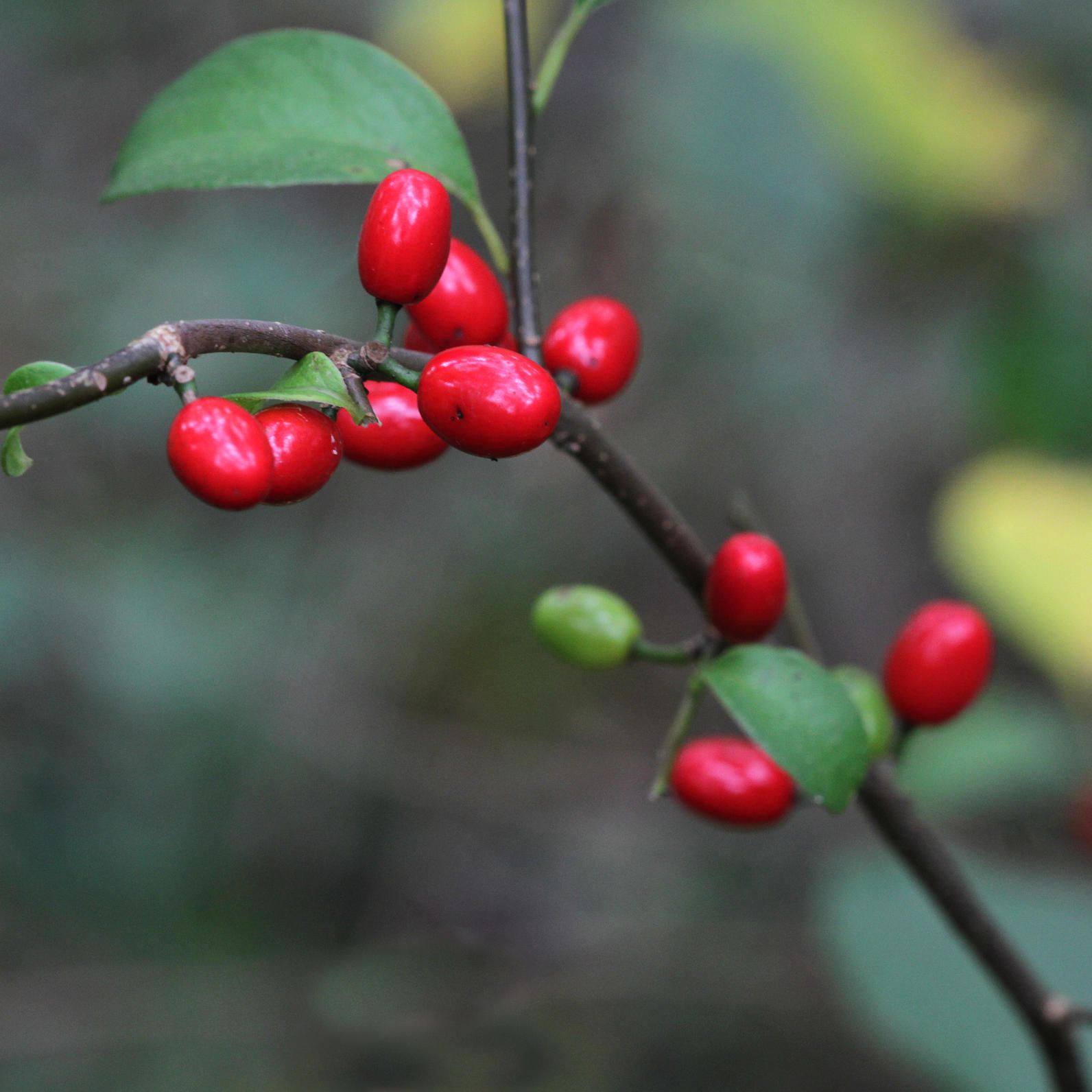Please welcome Audubon North Carolina’s Bird-Friendly Communities Coordinator Kim Brand. Launched in 2013, Audubon North Carolina’s Bird-Friendly Communities initiative is a partnership program involving more than 20 organizations with a vision for creating a more bird-friendly North Carolina. This vision statement guides the goals and projects of the group: “Bird-friendly communities give birds the opportunity to succeed by providing connected habitat dominated by native plants, minimizing threats posed by the built environment, and engaging people of all ages and backgrounds in stewardship of nature.”
The Spicebush is among our Bird-Friendly Native Plants of the Year for 2015. Find this and other plants at your local participating retailer.
Imagine that you are a Wood Thrush, flying south for the winter. You fly all night long – as many as 300 miles in one night – and land before dawn in a suburban yard in North Carolina.
You rest, and then after dawn look for food. If you find nothing but Privet berries, you are out of luck and you have to search for berries elsewhere. If you find a Spicebush, you’ve hit the jackpot, refueled, and continued your journey to your winter territory sooner and in better condition. Spicebush berries are nearly 50 percent fat, making them an ideal fuel for birds during fall migration.

Excitement for Native Plants
When I shared this story with a group of gardening volunteers at the J.C. Raulston Arboretum in Raleigh, Andréa Smith was so inspired that she went out and bought a Spicebush at a local garden center and planted it in her yard the very same day. Imagine my delight when I saw her photo!
Not only will thrushes, blue jays and tanagers seek out the Spicebush for its berries, the plant will attract Spicebush Swallowtail butterflies, who will lay their eggs on the leaves. The caterpillars that hatch from those eggs are the rock stars of the caterpillar world, with eyespots thought to mimic snake eyes.
How to Grow
Spicebush is native to North Carolina’s mountains, piedmont and coastal plain. It produces small yellow flowers from March through April and bears bright-red berries from August through September. It can grow 8 to 15 feet tall and 6 to 15 feet wide. Find a spot in part sun and wet to moist soil. Seasonal flooding is okay for Spicebush. Leaves turn yellow in the fall, making a stunning display!
Special note: Spicebush plants are either female or male. To get fruit, you need a male plant to provide pollen, which bees and other pollinators will transfer to the female flowers for fertilization. Many plants have both male and female flowers, but not Spicebush. Plant several plants, or choose plants of known sex at the nursery (male flowers are larger than female flowers).
Spicebush made our list of Bird-Friendly Native Plants of the Year for 2015. Find this and other plants at your local participating retailer.



